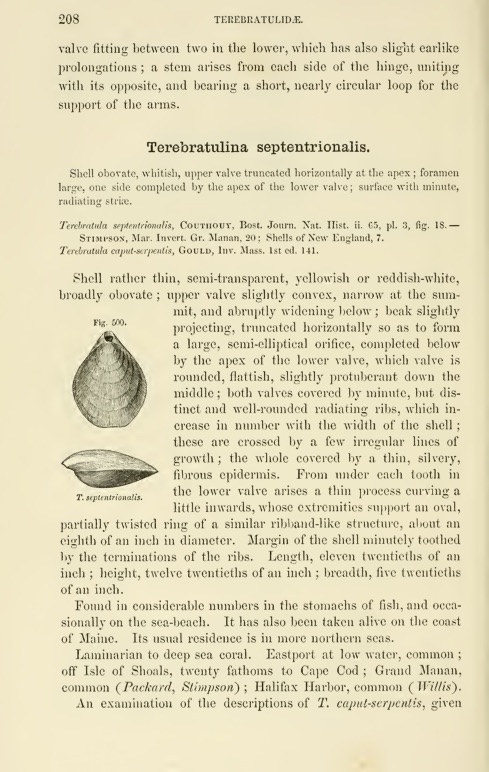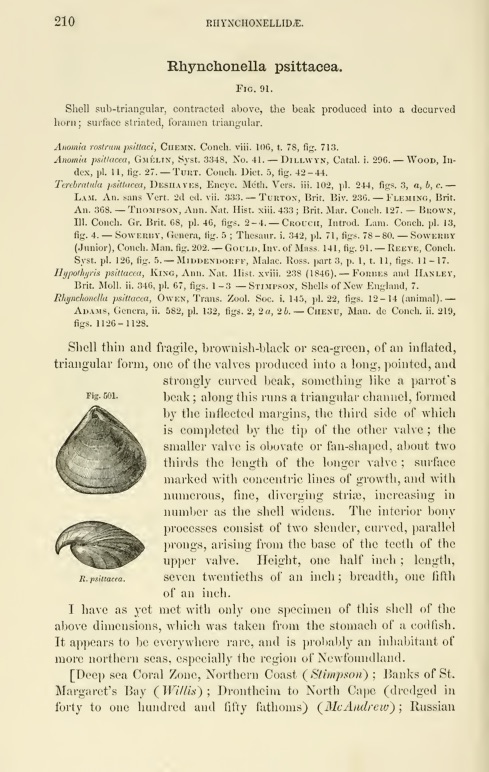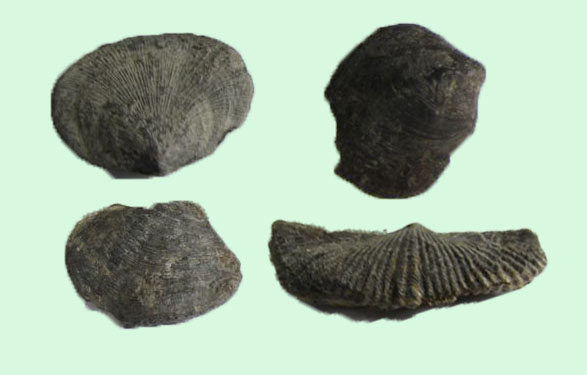- Introduction
- ES Morse
- Morse in New England
- Morse as an illustrator
- Morse in Japan
- Morse's pottery collection
- Charles Otis Whitman
- Shosaburo Watase
- Umeko Tsuda and Sutematsu Yamakawa
- Katsuma Dan
- Emperor Showa (Hirohito)
- Shinya Inoue
- Osamu Shimomura
- Susumu Honjo
- --------
- E.S. Morse Institute
- Institutional Cooperation
- Fukushima
- About
E.S. Morse as Illustrator

Terebratulina septentrionalis. Illustration by E.S. Morse from Report on the Invertebrata of Massachusetts, page 208.

Rhychonella psittacea. Illustration by E.S. Morse from Report on the Invertebrata of Massachusetts, page 210.
The following is from the Preface to Report on the Invertebrata of Massachusetts, 2nd edition, W.G. Binney, editor. Massachusetts, 1870.
I naturally turned to the Museum of Comparative Zoology at Cambridge as our richest depository of Natural History, and was not disappointed in finding a valuable collection of New England Shells. Professor Agassiz kindly put these at my disposal, and Mr. J. G. Anthony spared no pains to assist me in selecting specimens for figuring. The Museum of the Peabody Academy at Salem also furnished a large number of specimens, which were drawn on wood by Mr. E. S. Morse with his usual accuracy. I am indebted also to Mr. Morse for the identification of most of the smaller and more difficult species, and to him, indeed, belongs almost the entire credit of the illustrations in the text.

Brachiopods are marine animals, similar at first glance to bivalve molluscs (clams, mussels, etc.). They are found extensively in the fossil record and were the source of much discussion about evolution in Darwin's day. Braciopods were the impetus for E.S. Morse's first trip to Japan.
The fossil shells shown above are species of Brachiopod fossils found in northeastern U.S.